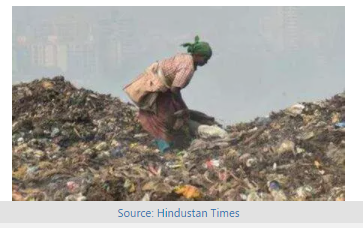Ordering food over the phone is extremely convenient. It’s fast and just a call away. You get your desired cuisine in just half an hour, but have you ever thought about the packaging it comes in and where the packaging ends up? Of the 78 million metric tons of plastic packaging produced each year globally, we recycle a mere 14 per cent. Lightweight and floatable, plastic that escapes collection flows into our oceans—nine million tons annually—most of it from developing nations that lack the infrastructure to manage it. The problem is expected to get worse as those nations grow more affluent and inevitably start consuming more packaged foods. As many others in an increasingly convenience-obsessed world continue to purchase meal-kit and grocery services—which generate considerable packaging—and takeout foods. (ROYTE, 2019)
Food and groceries are our daily needs, we often end up buying products without giving a second thought of how their packaging might leave destructive impacts on the environment. Food packaging is further divided into four categories: plastic packaging, paper packaging, glass packaging and metal packaging. Most of the items we purchase end up in our trash cans and significantly less amount of the packaging actually gets recycled and reused. Ordering online is also one of the significant sources to produce food packaging waste. According to Dinegreen, restaurants generate over 1.5 billion pounds of paper per year on receipts alone.
21 years old, Moiz Yamani, who started food ordering platform Cooklingo, is an inspiration to the foodservice industry. Cooklingo shared some practical steps towards responsible packaging. “We at Cooklingo are introducing the language of cooking through going paperless. We provide our menu and any other information on WhatsApp. This just does not help us contribute to reducing paper, but also making our consumers aware. We provide everything pre-prepped, and our kitchenware is reusable, which can be used just after one wash and added to your kitchen cutlery.” said Moiz.
There are several ways where you can contribute to less packaging or reuse it: Using your own bag: While shopping, carry your own reusable bag. This will help to reduce the use of onetime-use plastic and other extra packaging materials. Reuse packaging product: Always reuse the plastic bags you have used once instead of just throwing them. Even when you throw them after one use deposit them responsibly so that it can be recycled.
Avoid pre-packaging: Buying products in bulk and in loose will help you avoid pre-packaging. Aware consumer: As a consumer, one has the power to bring awareness around and change corporate world policies. Pay attention to recyclable or reusable packaging. “While it may seem small, the ripple effects of small things is extraordinary.” Let join hands and do extraordinary.

